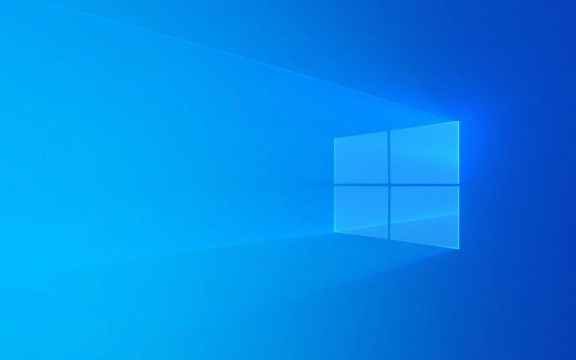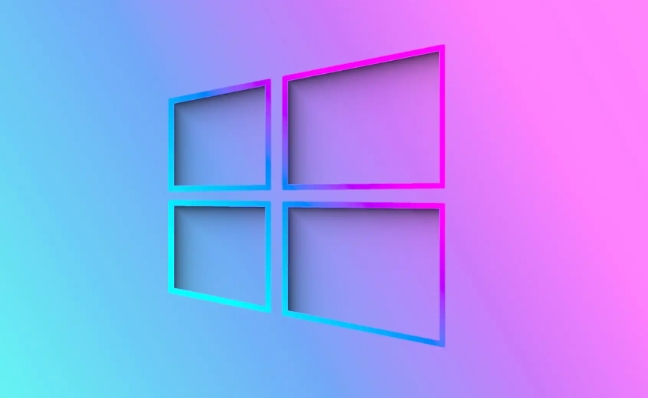The Difference Between Laptops and Chromebooks Explained
Jul 23, 2025 am 03:54 AMThe core difference is that laptops run full operating systems like Windows or macOS and support a wide range of software including offline and professional applications, while Chromebooks run Chrome OS, which is browser-based and optimized for web tasks and cloud apps. 2. Laptops offer stronger performance with more powerful processors, higher RAM, larger local storage, and full offline functionality, whereas Chromebooks use efficient but less powerful hardware, rely on cloud storage, and are best used online. 3. Chromebooks cannot run heavy software like Photoshop or QuickBooks Desktop unless using limited Linux or Android alternatives. 4. Chromebooks depend heavily on internet connectivity, although some Google apps work offline, while laptops function seamlessly without Wi-Fi. 5. Chromebooks have superior built-in security with automatic updates and sandboxing, requiring minimal maintenance, while laptops need regular updates and antivirus protection but offer greater control. 6. Chromebooks are cheaper ($200–$500) and ideal for students and light users focused on Google services, while laptops start around $400 but typically cost more and are suited for professionals needing software versatility, gaming, coding, or robust offline use. 7. Choose based on your daily workflow: pick a Chromebook if you live in the cloud and value simplicity and affordability, or choose a laptop if you rely on desktop applications, work offline frequently, or require long-term flexibility and power—matching the device to your actual usage ensures better value and fewer frustrations.

Laptops and Chromebooks might look similar at first glance—both have keyboards, screens, and run on batteries—but they serve different needs and work in fundamentally different ways. If you're trying to decide which is right for you, here's what actually matters:

? What’s the Core Difference?
Laptops run full operating systems like Windows or macOS and can handle a wide range of software—from heavy-duty programs like Adobe Photoshop or AutoCAD to offline games and professional tools. They’re built for versatility.
Chromebooks, on the other hand, run Chrome OS—a lightweight operating system built around the Google Chrome browser. They’re designed for web-based tasks: browsing, email, Google Docs, streaming video, and using cloud apps. Most things happen online or through Google’s ecosystem.

? Performance & Storage
Laptops:
Usually have more powerful processors (Intel Core i5/i7, AMD Ryzen), more RAM (8GB–32GB ), and larger storage (256GB SSD to 1TB ). You can install programs locally, store files on the device, and work offline with most apps.-
Chromebooks:
Often use less powerful (but efficient) processors like Intel Celeron or ARM chips, with 4–8GB RAM and limited internal storage (usually 32–128GB). They rely heavily on Google Drive for cloud storage. Most apps and files live online—not on the device.
?? Important: If you need to run Photoshop, video editing software, or Windows-specific programs like QuickBooks Desktop, a Chromebook likely won’t cut it—unless you use Linux apps or Android versions (which have limitations).
? Internet Dependence
- Chromebook users should expect to be online most of the time. While many Google apps (Docs, Sheets) now work offline, complex workflows or software still require a connection.
- Laptops don’t care if you’re offline. You can install software once and work anywhere—airplane, train, remote cabin—no Wi-Fi needed.
? Security & Updates
- Chromebooks win here. Chrome OS auto-updates silently and securely, and its sandboxed design makes malware rare. Great for schools, casual users, or anyone who hates dealing with antivirus software.
- Laptops need more maintenance—manual updates, antivirus scans, driver updates—but give you full control over what’s installed and how the system behaves.
? Price & Use Cases
- Chromebooks are often $200–$500. Ideal for students, web workers, light users, or anyone who lives in Gmail, Google Docs, Zoom, and YouTube.
- Laptops start around $400 but go up fast ($800–$2000 ). Worth it if you need professional software, gaming, coding, or serious offline productivity.
In Short:
-
Choose a Chromebook if:
- You mostly use the web and Google apps
- Budget matters
- You want simplicity and security
- You’re okay being online most of the time
-
Choose a laptop if:
- You need specific desktop software
- You work offline often
- You want long-term flexibility and power
It’s not about which is “better”—it’s about what you actually do all day. Match the tool to the task, and you’ll save money and frustration.
Basically, just ask yourself:
? Do I live in the cloud or on my desktop?
That’ll tell you everything.
The above is the detailed content of The Difference Between Laptops and Chromebooks Explained. For more information, please follow other related articles on the PHP Chinese website!

Hot AI Tools

Undress AI Tool
Undress images for free

Undresser.AI Undress
AI-powered app for creating realistic nude photos

AI Clothes Remover
Online AI tool for removing clothes from photos.

Clothoff.io
AI clothes remover

Video Face Swap
Swap faces in any video effortlessly with our completely free AI face swap tool!

Hot Article

Hot Tools

Notepad++7.3.1
Easy-to-use and free code editor

SublimeText3 Chinese version
Chinese version, very easy to use

Zend Studio 13.0.1
Powerful PHP integrated development environment

Dreamweaver CS6
Visual web development tools

SublimeText3 Mac version
God-level code editing software (SublimeText3)
 Google Translate Picture | Translate Text in Images - MiniTool
Jul 12, 2025 am 12:57 AM
Google Translate Picture | Translate Text in Images - MiniTool
Jul 12, 2025 am 12:57 AM
This Google translate picture guide shows you how to translate text from an image. If you are looking for more computer tips and solutions, you can visit php.cn Software official website where you can also find some useful computer tools like php.cn
 How to Install Device Drivers Manually on Windows 11/10? - MiniTool
Jul 06, 2025 am 12:15 AM
How to Install Device Drivers Manually on Windows 11/10? - MiniTool
Jul 06, 2025 am 12:15 AM
If your Windows 11/10 computer doesn’t automatically the latest versions of device drivers, you will need to manually install them. In this post, php.cn Software will show you 3 different methods to manually install drivers on your device.
 How to Amplify/Boost/Increase Microphone Volume Windows 11? - MiniTool
Jul 06, 2025 am 12:27 AM
How to Amplify/Boost/Increase Microphone Volume Windows 11? - MiniTool
Jul 06, 2025 am 12:27 AM
This post delivered by php.cn official web page introduces three methods to improve microphone volume and boost its performance, in Control Panel, via Settings, and by Device Manager. Read the below content to view details.
 what is an operating system
Jul 11, 2025 am 03:16 AM
what is an operating system
Jul 11, 2025 am 03:16 AM
The operating system is the basic software for managing hardware resources, running programs, and providing user interaction interfaces. It coordinates the relationship between hardware and software and is responsible for memory allocation, device scheduling, file management and multitasking. Common systems include Windows (suitable for office and gaming), macOS (Apple devices, suitable for creative work), Linux (open source, suitable for developers), and Android/iOS (mobile device system). The choice of ordinary users depends on the usage scenario, such as software compatibility, security and customization requirements. How to view system information: Use winver command for Windows, click on the machine for macOS, use terminal commands for Linux, and find the phone in settings. The operating system is the underlying tool for daily use,
 Best Ways to Fix Windows 11/10 Control Panel Not Opening!
Jul 08, 2025 am 12:01 AM
Best Ways to Fix Windows 11/10 Control Panel Not Opening!
Jul 08, 2025 am 12:01 AM
Have you ever wanted to adjust computer settings to fix some issues but suffered from Control Panel not opening? There is nothing more frustrating than this app not turning on, stopping you from viewing and changing system settings. In this post, mul
 How to Open and Run dxdiag.exe on Windows 10/11
Jul 06, 2025 am 12:23 AM
How to Open and Run dxdiag.exe on Windows 10/11
Jul 06, 2025 am 12:23 AM
This post includes answers for what is dxdiag, how to run dxdiag in Windows 10/11, DirectX Diagnostic Tool’s main functions, and how to update dxdiag.exe driver. php.cn Software also provides many other computer tips and solutions for users. You can
 What Is Dell Digital Locker? How to Log in and Use It on Dell PC? - MiniTool
Jul 07, 2025 am 12:28 AM
What Is Dell Digital Locker? How to Log in and Use It on Dell PC? - MiniTool
Jul 07, 2025 am 12:28 AM
What is Dell Digital Locker? How to log into Dell Digital Locker? This post from php.cn provides answers. Besides, you can know how to use your Dell Digital Locker to find software products included with your Dell computer.
 How to Open Windows 11 Computer Management Console in 7 Ways? - MiniTool
Jul 09, 2025 am 12:18 AM
How to Open Windows 11 Computer Management Console in 7 Ways? - MiniTool
Jul 09, 2025 am 12:18 AM
This essay summarized by php.cn Software mainly teaches you how to open Windows 11 Computer Management with Windows Search, Quick Link menu, Run dialog, command prompt, PowerShell, File Explorer, Control Panel, as well as a desktop shortcut.







